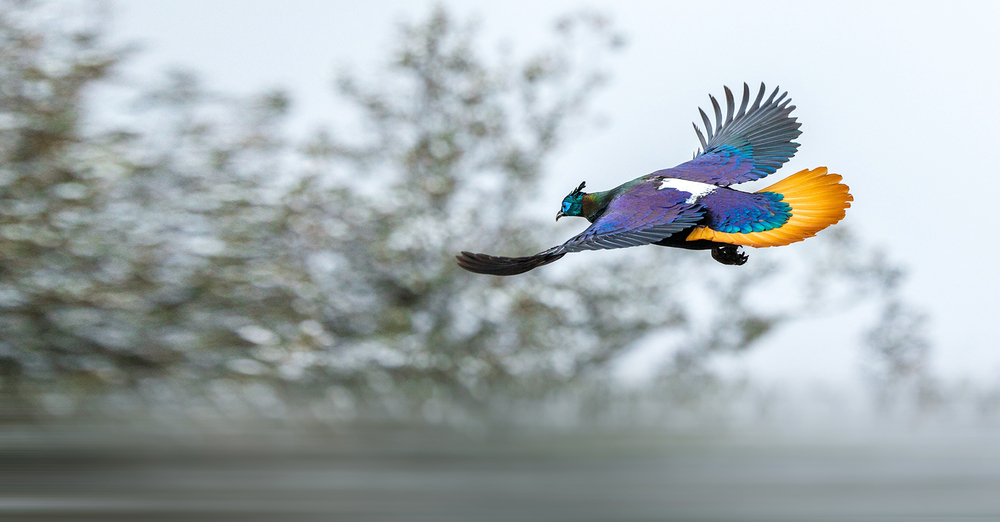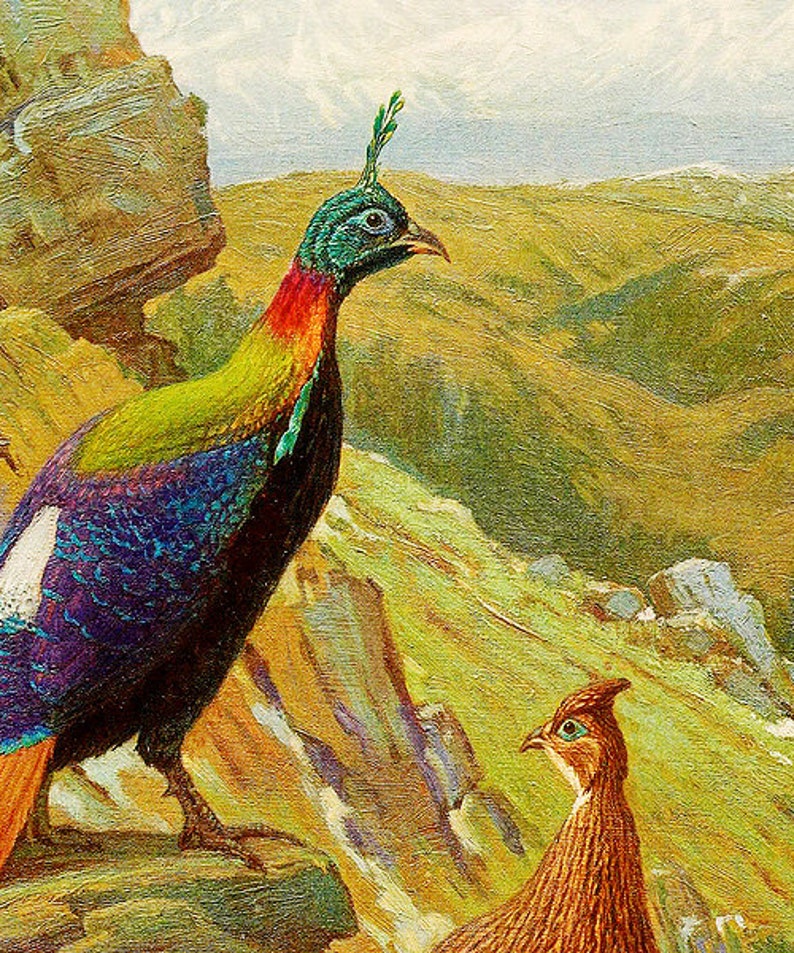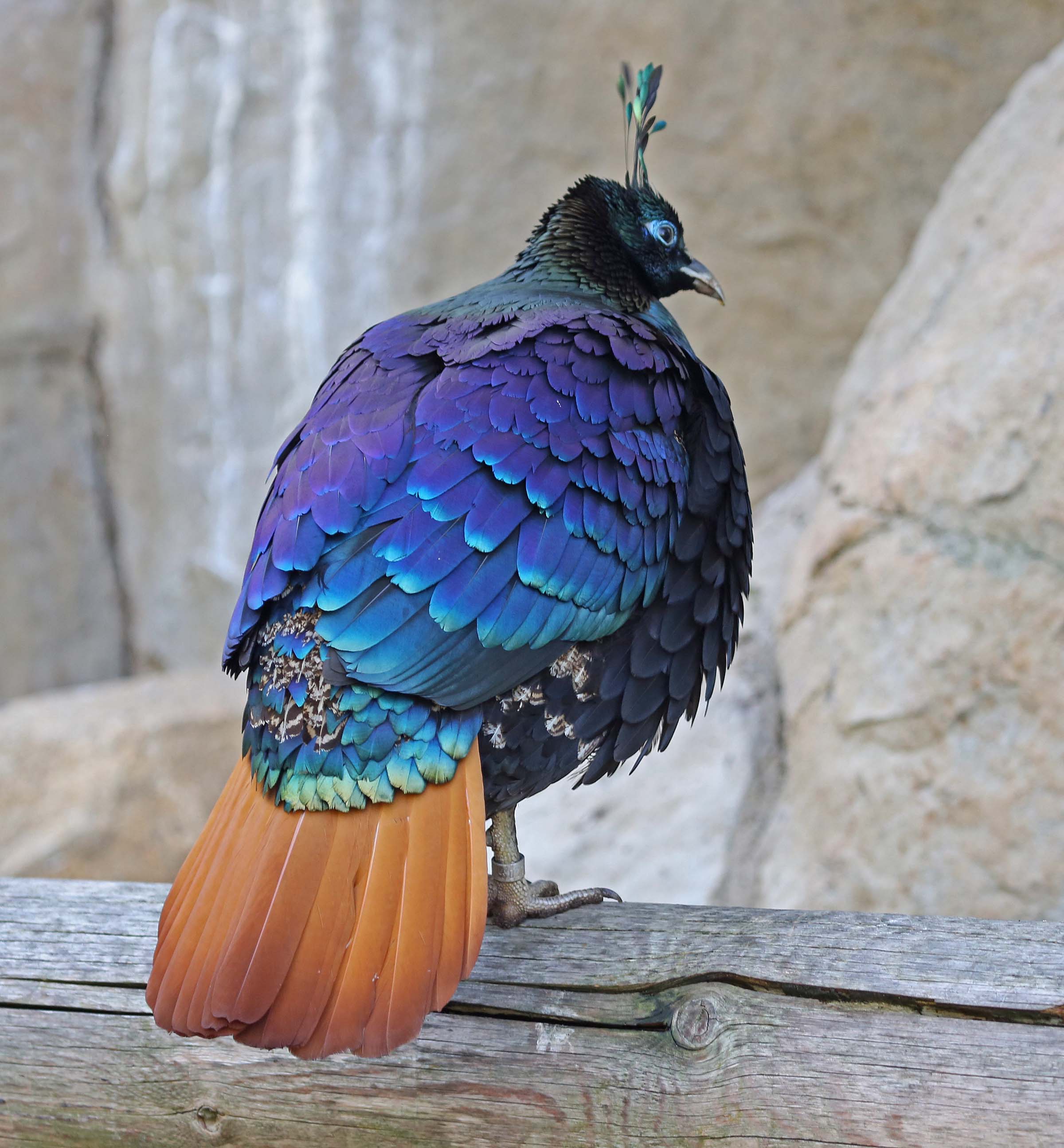


The young become completely independent at around six months of age. Also known as the impeyan monal, impeyan pheasant, this galliforms belongs to the family of Phasianidae. He continues to protect the young until they fledge. Female has white throat, short crest, boldly streaked underparts, white crescent on uppertail-coverts, and narrow white tip to tail.
Himalayan monal pheasant size Patch#
Male is iridescent green, copper and purple, with white patch on back and cinnamon-brown tail. The adult pheasant is 50-90 centimeters (cm) in length with a long tail, often accounting for half the total length. Following mating the female lays 3-5 eggs in a shallow scrape, incubating them for 27 days with the male standing guard over her throughout this period. Description: Large sized dimorphic pheasant with iridescent male and smaller crested uniform greyish brown female.

The male begins calling throughout the day, using a bobbing body display to attract a female. Their breeding season begins in April while they are still at high altitude. The Himalayan monal is preyed up on by large birds of prey and the snow leopard. This leads to areas in their range which show distinctive signs of feeding. They forage throughout the day and dig extensively with their bills often up to 25cm deep. They feed on seeds, tubers, shoots, berries, insects and their larvae. They normally live in the steep sided forested valleys in winter but when summer comes they move to higher altitude, often above the tree line. The Himalayan monal lives in the coniferous and open forests at high altitude. We found that of the six threatened Himalayan Galliformes species, geographic range size knowledge of five species, namely cheer pheasant (Catreus wallichii). The male has an iridescent multi-coloured plumage while the female, like all female pheasants, is much drabber. The combination of all the above parameters were helpful in the identification of the feathers of selected species with respect to forensic points of view.This stunningly striking member of the pheasant family is, as its name suggests, found living throughout the Himalayan mountains. The global population size has not been quantified, but the species is reported to be. However, soon after we saw one, and we had completed the expansion, they became difficult to. A male and female Himalayan Monal, Lophophorus impejanus. They are a large bird and we were concerned to create a space big enough the house them. There is a noticeable difference between the sexes in terms of weight and size. The average weight of an adult man or female is between 4.4 and 5.2 pounds. In addition, the elemental profiles of the feather samples was studied using field emission-scanning electron microscopy-energy dispersive X-ray spectroscopy (FE-SEM-EDX) and chemometric technique was applied for classification, discrimination and predication among the selected galliformes species. One of the reasons that the aviary grew to its present size was the Himalayan Monal Pheasant. The Himalayan Monal Pheasant measures an average of 2.3 feet in length, making it a huge bird. Intra-species variation among feather samples was found to be insignificant (p-value>0.5), whereas, the inter-species variation was found to be significant (p-value<0.5). The data obtained through morphometric characteristics was subjected to statistical analysis (one way ANOVA) to study significance among the intra-species and inter-species variations. This species has a very wide range, and hence does not approach the thresholds for Vulnerable under the range size criterion.

They have a white patch of feathers underneath the base of their. In the present study, an attempt has been made to collect the shed feathers belonging to three different galliform species (Cheer Pheasant, Kalij Pheasant, and Himalayan Monal) and to study their various morphological characteristics (color, shape, texture, and size), morphometric characteristics (barbule width, the distance between barbules, length and width of barbules, distance between two pigments, internodal distance and node width etc.) and elemental composition. The male Himalayan Monals have bright and colorful feathers of blue, green, purple, and red. The population size has not been quantified, but it is not believed to approach the thresholds for Vulnerable under the population size criterion (<10,000. Furthermore, it can also form an important corroborative evidence in linking the criminal to the crime scene by establishing its physical contact. Species identification help in discerning whether the bird species are protected under legislations related to wildlife forensics or not. Abstract Feathers can act as one of the vital evidence in wildlife forensics, mainly when a question related to species of bird arises.


 0 kommentar(er)
0 kommentar(er)
